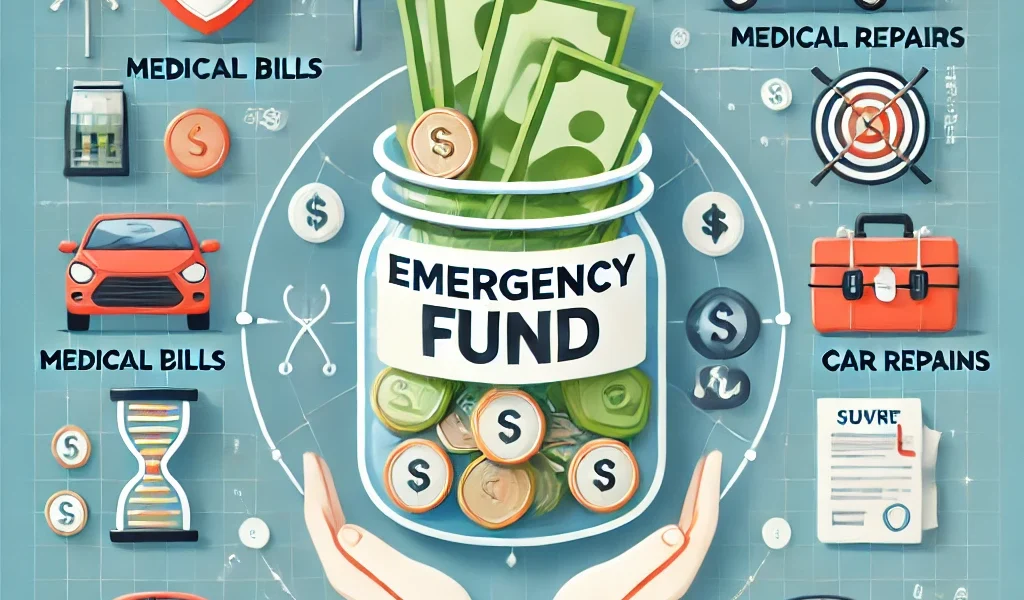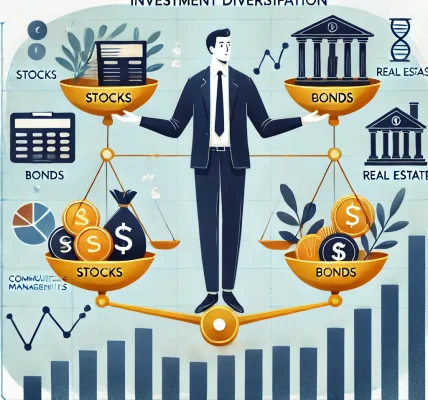Introduction
Life is unpredictable, and unexpected expenses can arise at any time—medical emergencies, job loss, car repairs, or home maintenance issues. Without a financial cushion, these unexpected costs can lead to debt, financial stress, and long-term instability.
An emergency fund is a crucial part of any solid financial plan. It provides financial security and peace of mind, ensuring that you’re prepared for life’s uncertainties without derailing your long-term financial goals.
In this guide, we’ll explore why you need an emergency fund, how much you should save, and strategies to build it efficiently.
Why an Emergency Fund Is Essential
1. Protects Against Unexpected Expenses
Emergencies like medical bills, home repairs, or car breakdowns can happen anytime. Without an emergency fund, you may have to rely on high-interest credit cards or personal loans.
2. Prevents Debt Accumulation
If you don’t have savings, an unexpected financial setback can push you into debt, making it harder to recover financially.
3. Provides Job Security Buffer
Losing a job can be financially devastating. An emergency fund can help cover essential expenses while you search for new opportunities.
4. Reduces Financial Stress
Knowing you have a safety net allows you to handle unexpected financial situations with confidence, rather than panic.
5. Supports Smart Decision-Making
Without financial pressure, you can make better career and investment choices without being forced into quick, unfavorable decisions.
How Much Should You Save in an Emergency Fund?
The right emergency fund amount depends on your lifestyle, income stability, and monthly expenses. Below are different savings recommendations:
1. Basic Starter Fund (For Beginners)
- Recommended Amount: $500 – $1,000
- Best For: People just starting out or those paying off high-interest debt.
- Purpose: Covers small emergencies like car repairs, medical copays, or unexpected bills.
2. 3-Month Emergency Fund (For Moderate Security)
- Recommended Amount: 3 months of essential expenses
- Best For: People with stable jobs and lower financial risk.
- Purpose: Covers temporary job loss, urgent medical expenses, or home repairs.
3. 6-Month Emergency Fund (For Maximum Security)
- Recommended Amount: 6 months of essential expenses
- Best For: Freelancers, business owners, or individuals with unpredictable income.
- Purpose: Provides financial security in case of long-term unemployment or major life changes.
4. 12-Month Emergency Fund (For Extra Safety)
- Recommended Amount: 12 months of essential expenses
- Best For: High-risk professionals or individuals with unstable income.
- Purpose: Ensures full financial independence for an extended period without income.
How to Calculate Your Emergency Fund Amount
To determine the exact amount you need, follow these steps:
Step 1: Calculate Your Monthly Essential Expenses
Include only non-negotiable expenses, such as:
- Rent/Mortgage: $_____
- Utilities: $_____
- Groceries: $_____
- Insurance (Health, Car, Home): $_____
- Debt Payments (Loans, Credit Cards): $_____
- Transportation (Gas, Public Transit): $_____
- Healthcare Costs: $_____
Step 2: Multiply by the Desired Safety Net Period
Multiply your total monthly essential expenses by the number of months you want to cover (e.g., 3, 6, or 12 months).
For example, if your monthly expenses are $3,000 and you want a 6-month emergency fund: $3,000 × 6 = $18,000
How to Build an Emergency Fund (Step-by-Step Guide)
1. Set a Realistic Goal
Start with a small, achievable goal (e.g., $1,000) and gradually increase your target as you build financial discipline.
2. Open a Separate Savings Account
Keep your emergency fund in a high-yield savings account to earn interest while ensuring quick access in emergencies.
3. Automate Your Savings
Set up an automatic transfer from your paycheck or checking account to your emergency fund.
4. Cut Unnecessary Expenses
Identify non-essential expenses (e.g., subscriptions, dining out, impulse shopping) and redirect those funds into savings.
5. Use Windfalls Wisely
Put bonuses, tax refunds, or unexpected income directly into your emergency fund.
6. Start a Side Hustle
Consider freelancing, gig work, or passive income sources to boost your savings faster.
7. Avoid Using Your Emergency Fund for Non-Essentials
Only use your emergency fund for genuine financial emergencies—not vacations, shopping, or luxury items.
Best Places to Keep Your Emergency Fund
Your emergency fund should be easily accessible but not so accessible that you’re tempted to spend it. Here are the best options:
1. High-Yield Savings Account (Best for Most People)
- Offers higher interest rates than traditional savings accounts.
- FDIC-insured (safe from market fluctuations).
- Easy to access in an emergency.
2. Money Market Account
- Slightly higher interest than regular savings accounts.
- Comes with check-writing or debit card access.
- Suitable for those who want some flexibility.
3. Certificate of Deposit (CD) Ladder
- Locks money away for a set period.
- Higher interest than savings accounts.
- Only recommended for long-term emergency savings.
4. Treasury Bonds or I-Bonds
- Government-backed and low-risk.
- Best for those looking for inflation-protected savings.
- Not ideal for immediate emergency access.
Common Mistakes to Avoid
❌ Not Saving Enough
Many people underestimate how much they need in an emergency fund. Plan for at least 3 months of expenses.
❌ Keeping It in a Regular Checking Account
Keeping emergency savings in a checking account makes it too easy to spend on non-essentials.
❌ Using It for Non-Essential Expenses
Your emergency fund should be reserved only for true emergencies, not vacations, new gadgets, or luxury items.
❌ Not Replenishing After Use
If you use part of your emergency fund, prioritize replenishing it as soon as possible.
Conclusion
An emergency fund is the foundation of financial security. Whether you’re just starting with $1,000 or aiming for a full 6–12 months of expenses, the key is to start saving consistently and strategically.
By planning ahead, automating savings, and avoiding common mistakes, you’ll ensure financial stability and peace of mind—no matter what life throws your way.



